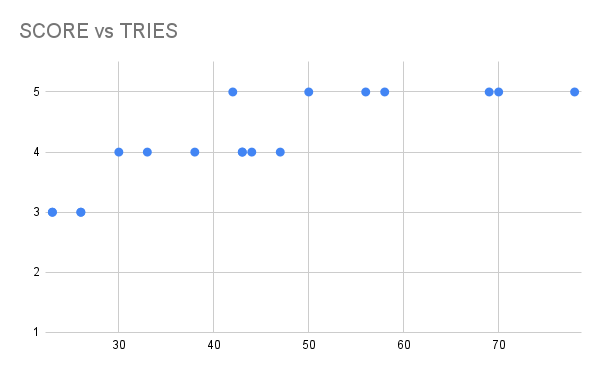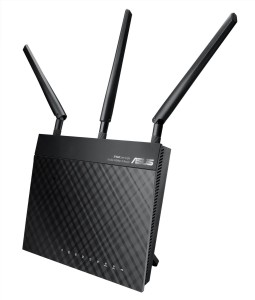Everyone loves Wordle! The author, Josh Wardle, has created the first true meme of 2022 and it’s conquered the Internet faster than Q. (OK, that’s hyperbole. Wishful thinking on my part).
I think the appeal is partly because it’s just once a day, and because the interface does your homework for you. The real genius in my opinion was making it possible to share your results on social media, without giving away the day’s solution.
I found myself wondering if I could quantify my performance on Wordle. Right now, the emoji grid you get when you copy and paste your results is very visual and even a little confusing to interpret at first. I realized that there’s a way to condense that information into a single, descriptive score instead. Here’s the formula:
sum ( ( (BLACK* 2) + (YELLOW* 1) + (GREEN* 0) ) * row )
For example, here are my results from today’s wordle:

My score is therefore 8 from row 1, 18 from row 2, and 18 from row 3, giving me a total score of 44.
Note that a perfect score – 5 greens on your first try – is zero. The worst possible score is 210, though actually, it’s lower than that in practice. This is because 6 tries of 5 letters each equals 30 guesses, and there are only 26 letters in the alphabet, so it’s impossible in practice to get 6 rows of black squares.
With the score, you can more easily compare performance over time and with your friends. Even if you and someone else both take the same number of tries, there is a potential difference in efficiency.
I have put the formula into a google sheet here that is read-only but which you can easily copy to your own account and use. Just paste your Wordle score into cell A1. The sheet supports dark mode and light mode, too.
If you like this score idea, please share! Here’s a simple URL that redirects to this blog post that you can share when you share your Wordle score: https://tinyurl.com/wordlescore
Thank you! 🙂
UPDATE: I think I’m over posting my score to Facebook on a daily basis, but I am tracking my scores on Google Drive, because I wanted to see how my calculated score correlates with number of tries. Here’s the data as of 1/27/22:

I’ve only scored below 30 twice and both those times were with 3 guesses. However, there’s a lot of overlap in score for 4 tries and 5 tries. In other words, it’s possible to get a lower score in 5 tries than in 4 tries. I think this captures some of the strategy. For example, if there are two solutions after guess #3, then my score only penalizes you for the incorrect letters in your guess. There may be a similar overlap between 3 tries and 4 tries, but I haven’t scored well enough yet to detect any such patterns. I suppose this is easy enough to determine from the formula, but I don’t want to make the effort.







